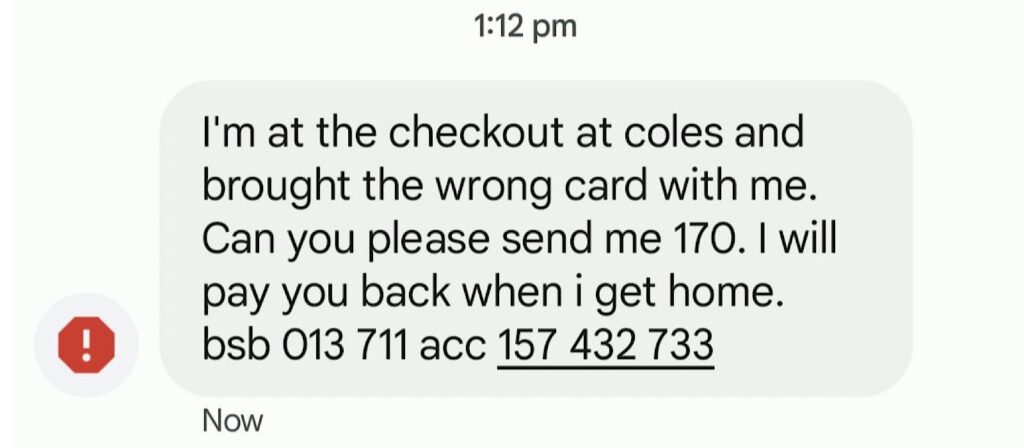The next message you get from your parents mightn’t be as legit as you think, as scammers try a new approach: pretending to be your parents.
The job of a scammer is never done, it seems, and they’ll try anything to relieve you of your hard-earned money. Never mind they’ve done nothing to earn it, but they still want it all the same, and are always coming up with dodgy tactics to trick you.
This year so far, Australians have lost a whopping $380 million in scams, most of it to investment scams, because the lure and promise of making more money is often a fast way to convince people to hand over money.
Alternatively, there’s another approach popping up in Australia this week, as scammers look to use messages from your parents as the ultimate lure.
Popping up in Australia over the past few weeks, scammers are pretending to be “Mum” and sending you a message, asking for money because they left their card at home. What’s going on?
How the Mum SMS scam works
Pretending to be someone has something of a norm for scammers lately, spoofing real companies by using a different sender ID in text messages, but the focus is normally on Telstra, JB HiFi, Uber, and so on and so on. Big companies are the typical target, not so much small fish.
In the Mum SMS scams going around Australia, the sender ID is just “Mum”, even if the phone number it’s coming from isn’t your mother. The sender has nothing to do with your real mum, and is instead just using the name many Australians have for their mother in their phone as the sender name.
From there, the text is pretty simple, saying something along the lines of:
“I’m at the supermarket and brought the wrong card with me. Can you please send me 150. I will pay you back when I get home.”
You’ll see a BSB and account number alongside, with that being the crux of the message. We’ve seen variations covering different places, such as Woolies, Coles, and the petrol station. The amounts requested typically range from $100 to $200, and the bank deposit details are different each time.
But the idea is the same for every message: scammers are pretending to be someone familiar that you know, faking the ID and hoping you don’t pick up that it’s a trick. It wouldn’t surprise us if they responded if you messaged back.
What can you do to avoid the fake parents SMS scam?
We wouldn’t be surprised to find out if the scammers started faking the sender ID of more than just “mum”, with any common name for a parent a possible target. Mum and Dad are names many people use for their parents, and these might be in your phone.
Granted, they’ll be in there under their real respective phone numbers, but at a glance, you mightn’t check. You just might assume the message is real, and that you need to send over some money ASAP.
Don’t.
Don’t send a single thing. Don’t even respond. Just look for the person’s real number in your phone and call them to find out if the message is legit.
If a message comes in purporting to be from someone you know, check whether the number is legit, and if it comes from the number you have for that person. If possible, call that person using the number you have and confirm the message for yourself.
The good news is that if you have that person’s number in your phone, checking is very, very easy. The bad news is that if you follow the instructions and send the money straight away, it will likely be lost, at least until the bank intervenes.
The frustrating news is that this type of scam seems to be going around Australian phones this year, hoping to make a dent on the emotions and wallets of anyone unlucky enough not to check.
So if you see one of these messages, do that very thing: check. Much like you should check if any message looks too good to be true, like looking at who sent you an email noting if you’ve won something, check this text by checking with the real person it’s apparently coming from.
Call the real person to find out if it’s legit, and then report the scam to Scamwatch. While it’s not yet known if the authorities can do much, reporting it may see the bank remove and track the account holders in question, and at hopefully prevent someone else from getting caught in a sticky situation.








